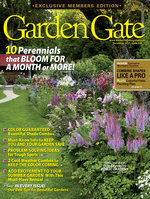Composters are one of the most efficient ways to create nutrient-rich soil for your garden and convert food waste into a valuable resource. They work by breaking down organic material into a dark, crumbly substance that’s perfect for gardening and growing.
In this post, we’ll cover the basics of a composter, including the different types of composters, the materials you can compost, and the best way to get started. We’ll also explain the science behind composting, so you can understand how it works and why it’s a great way to boost your garden’s health.
How Composters Work
Composting is the natural process of decomposition that converts organic materials such as leaves, grass clippings, and kitchen scraps into a nutrient-rich soil amendment. Microorganisms such as bacteria, fungi, and nematodes break down these organic materials into simpler compounds that can be absorbed by plants and other living organisms. The key factor for successful composting is to create the right balance of carbon and nitrogen material. Carbon provides energy that supports microbial activity, while nitrogen provides proteins needed for cell growth and repair.
Basic Types of Composters
Composters are available in both indoor and outdoor models with each having its specific advantages.
Outdoor Composters
Outdoor composters are ideal for those looking to produce large amounts of compost regularly for use in a garden setting. They come in various shapes and sizes but typically consist of enclosed bins made from a variety of materials, such as plastic or wood. These bins are designed to facilitate good ventilation so that oxygen-dependent microbes can do their work properly. They also come with a lid to protect them from the elements, pests, and odors, as well as a tap for easy drainage when finished with the process.
Indoor Composters
Indoor composters are designed for use in small spaces such as apartments or garages where there is limited space for an outdoor composter or not enough material to make it worthwhile. The main benefit is that they keep restocking easily due to their small size while still producing useful amounts of compost in a confined space.
Composting Materials and Technique
Organic material is the primary source of food for decomposer organisms, so it’s important to know what kind of materials you should include in your composter for optimum results. Generally speaking, any plant or animal material, such as leaves, vegetables, eggshells, or coffee grounds is suitable for composting. Avoid anything that could potentially contain pesticides or synthetic fertilizers since these chemicals can kill beneficial microbes. Avoid adding waste products like manure or pet droppings since these might contain bacteria that could be unsafe.
Mixing and Aeration
Once you’ve collected enough organic material, it’s important to mix them so that decomposer organisms can access all materials evenly throughout the bin. Maintaining proper aeration is essential for microbial activity inside the composter since oxygen-dependent microbes need oxygen to survive and multiply. Most outdoor compost bins come with a ventilated bottom that facilitates airflow, but indoor units may require frequent turning with a shovel or pitchfork every few days.
Moisture Content and Temperature
Maintaining proper moisture content is also essential for success since too much moisture can slow down microbial activity, while too little can inhibit growth altogether. The goal is 40-60% moisture content, so aim for a wetness level similar to a wrung-out sponge when mixing your materials.
As moisture levels change over time, you may need to add additional water. Temperature plays an important role in successful decomposition since most decomposer organisms thrive at temperatures between 55-70 degrees Fahrenheit. If your bin temperature rises too high, then consider adding cooler materials or transferring your composter outdoors.
Conclusion
Composters are a great way to convert food waste into a valuable resource and improve your garden. With a basic understanding of how composters work, you can confidently start making compost from your kitchen scraps and yard waste. Not only is composting an easy way to create nutrient-rich soil for your garden and conserve resources, but it also offers numerous environmental benefits, such as reducing air pollution, conserving water, and reducing waste in landfills. Now that you know more about composters, give it a try in your own home and observe the amazing improvements it will bring to your garden.
















